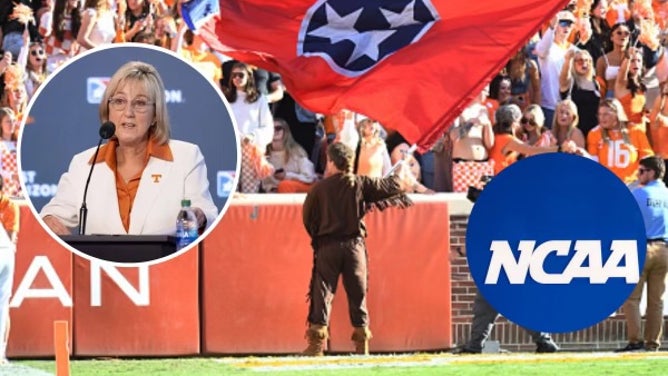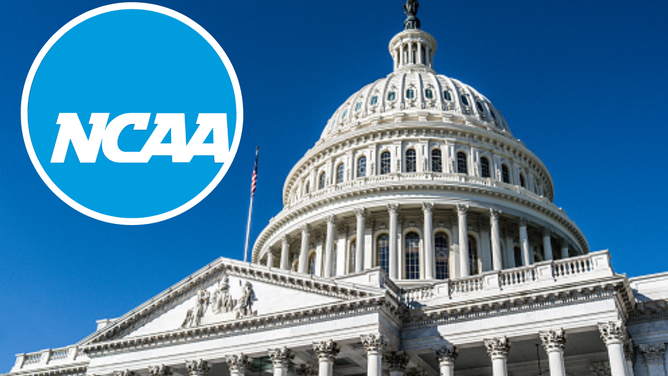NCAA Faces Biggest Week In College Athletics History With Settlement Vote, Leading To Revenue Sharing
One of the most pivotal weeks in collegiate sports has arrived, with the future of revenue sharing with athletes at the forefront.
The ongoing discussions surrounding the House vs. NCAA lawsuit has spurned a reaction on where we are headed when it comes to athletes getting a piece of the expensive pie that comes with the NCAA and conferences deciding on how to settle a lawsuit centered around NIL, and backpay for former athletes.
There have been a number of commissioners around the country that have voiced their displeasure with how the NCAA has proposed settling this lawsuit, along with others. Just for starters, the NCAA is planning on settling the primary lawsuit for $2.77 billion, of which 40% would be paid by the organization, while the other 60% will come from a reduction in payouts to leagues across college athletics.
Meaning, conferences like the SEC, Big Ten, ACC, along with Group of Five schools would be on the hook for the 60%, though the smaller conferences feel as though they should not have to pay the amount that is currently being proposed, and have submitted alternate proposals on how much they are on the hook for.
All of this is to say that schools from a conference like the Big East are not fully onboard and having to pay nearly $7 million annually for the next ten years, when their athletic department budgets are already going to take a hit when it comes to revenue sharing with athletes.
But the money part will be figured out, and votes will take place this week regarding a final proposal that will impact athletic departments across the country.
Voting On NCAA Proposal, Future Revenue Sharing This Week
If you've been following the ongoing negotiations, May 23rd is a day that continues to be brought up because of the start of a different antitrust case against the NCAA. Simply put, the NCAA wants to come to terms on one case, which would then take care of the other Litigations currently taking place in other court rooms.
Think of it as a bundle, with one case being settled with a financial amount that takes care of them all. This is why you keep reading about the $2.77 billion potential settlement. The Big Ten will meet this week in Los Angeles and vote on the proposal, as part of their spring meetings. As for the other conferences, SEC Presidents met last week in Birmingham to discuss the settlement, while ACC leaders met last week at their annual retreat in Florida.
You can expect votes to start occurring over the next few days, with a simple majority needed for most. If any of the athletes that are currently suing the NCAA do not agree with the settlement terms, they can opt-out. But, they would not get a piece of the $2.77 billion agreement being hashed out at the moment.
As part of the agreement to settle, the NCAA and conferences will also have a broad agreement added into the final resolution that will lay the groundwork for revenue sharing in collegiate sports. The number that has been discussed in these meetings, along with proposals sent out to conference leaders over the last month have the revenue sharing cap number at around $20 million per school.
There is still the question as to each conference opting-in to the ‘salary cap’ of $20 million per school, that will be distributed to athletes. One of the larger questions surrounding this deal also centers around how Title IX will play a factor in the distribution of money that will come from each school. At the moment, there is not a clear-cut answer on how this will end up playing out on campuses, which could open the door for future litigation.
Let's be clear, a chunk of these schools, along with their conferences, will not be paying out a full $20 million in revenue sharing to student-athletes. How this money will be dispersed to participating athletes has yet to be determined, and lawyers for each school will have their hands full when it comes to athletes signing contracts with each institution.
What About The NIL Collectives? They’ll Still Be Around
While a number of power-conference schools will try to bring most of the NIL framework inside the athletic department, athletes will ultimately still need collectives. Sure, you will have a $20 million pot that is divided up among these players across the sport, most importantly college football and basketball, which can turn a profit.
But the NIL Collectives that were started when this all began a few years ago will still be needed outside the athletic department. For star athletes with a brand, collectives have done a great job in finding the right marketing deals for the popular athletes. There's no reason to just bring them all in-house, especially when they've been quietly working with the schools to land players, while also securing lucrative deals for the past three years.

The state of Tennessee filed a lawsuit against the NCAA regarding alleged NIL violations by the University of Tennessee.
To be honest, a handful of players at each school will have the ability to make even more money outside the athletic department's revenue-sharing budget, so having different sources of income is to the benefit of the athlete.
Do we honestly think some of these schools are going to have marketing reps inside the athletic department working 24/7 on finding outside deals for certain players? The schools already have enough on their plate, so they should embrace the NIL Collectives for what they can do to keep certain athletes happy.
When Do We Start To See The Changes?
Once each conference has voted to approve the settlement figure that the NCAA has presented, which should come this week, then it comes down to the attorneys getting to work on the paperwork.
This will not be some sort of quick-fix, as the process of drafting the agreement, and then having a judge sign-off on the settlement will take some time. Also, there are so many different elements to this resolution, plus the new measures that come with it (Revenue Sharing), that this new component of college athletics will most likely not go into place until this time next year.

The NCAA has approved a new policy that will allow athletes to have unlimited transfers, as long as they are in good academic standing.
(OutKick / Trey Wallace)
And, seeing as each year brings a new crop of talent to collegiate sports, there will be an annual discussion when it comes to players opting-in to the settlement. Meaning, every year there is a chance that freshman athletes will have to decide if they want to opt-in or out. But this will not be some type of game-changer, just simple legality.
The point is that we still have a long way to go before this is all enacted, but the conversations surrounding the outcome of settling are already being had on college campuses. This settlement will add another layer to each athletic department across the country. And while most of them have been preparing for this time to come, they have work to do.
But we are here, the landscape of college athletics is on the brink of change, and the first part comes this week. Once the voting is done, the real chaos begins, and the difficult conversations will continue.